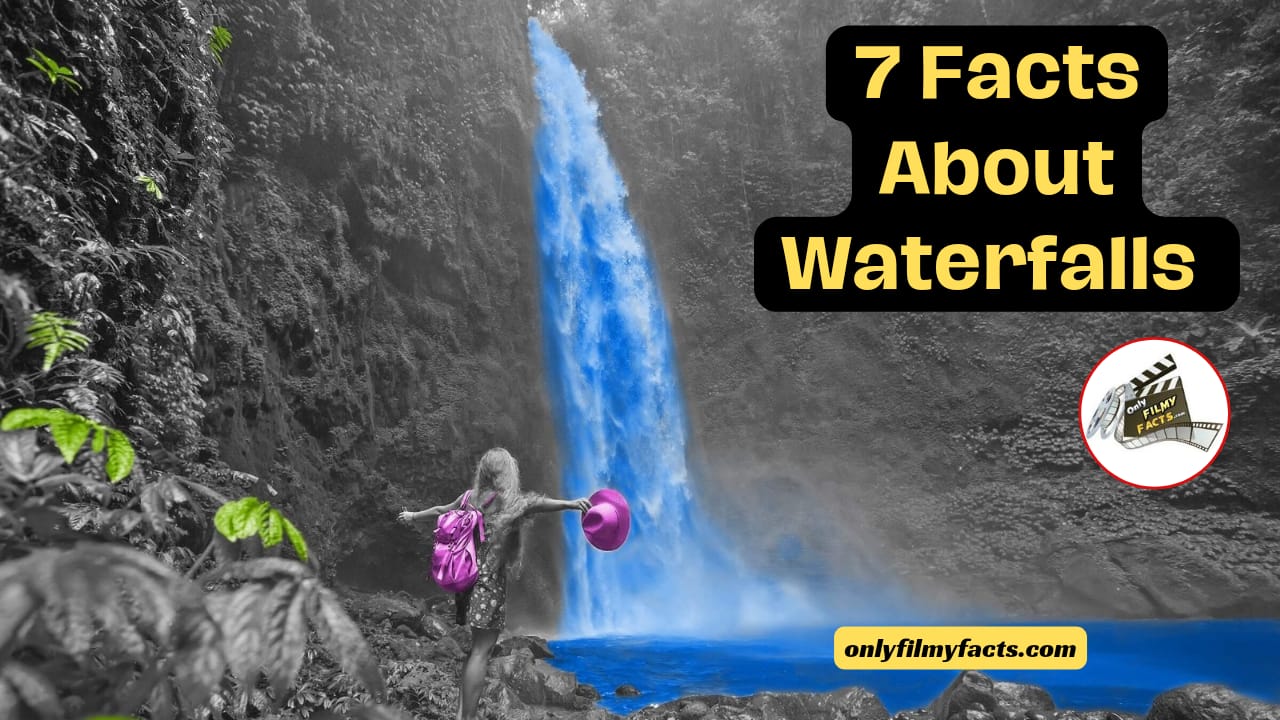Waterfalls continue to be a mystery to science. Geologists have only recently turned their attention to the processes that give rise to them and the distinct ecosystems they support, despite the fact that people have long appreciated their beauty and power. This article discusses waterfalls, covering everything from their scientific basis to their effects on industry, art, and culture.
1. Not All Water That Falls Is a Waterfall

Although you might assume that gravity, hydrogen, and oxygen are all you need to create a waterfall, not all streams that flow downward meet these requirements. A waterfall is defined as “a more or less vertical stream of water that flows over the edge of a cliff that has eroded away” in one guidebook. On the other hand, water flowing over uneroded rocks is called a rapid. In addition, the majority of experts concur that a fall must be fed by a stream, river, or creek that receives replenishment at least once a year, such as from rain or melting snowpack, and that it must be at least five feet tall to be classified as a waterfall.
2. Waterfalls Create — And Are Caused by — Erosion

It was once thought by scientists that only external geological or climatic factors could cause waterfalls, but more recent studies have shown that waterfalls can also create themselves. Rivers and streams cut paths of the least resistance across the terrain and erode the rock they flow over unevenly. Whether it’s washing across vertical or horizontal planes, water wears away soft rock like limestone and shale faster than hard rock like granite or basalt. Hard rock in the form of walls, ledges, or steps eventually becomes all that’s left, creating the terrain for a waterfall.
3. Waterfalls Can Be Categorized by Structure

The way waterfalls flow over different types of terrain is what makes them beautiful, and many waterfalls can be grouped based on their structural characteristics. Plunge waterfalls, like Yosemite National Park‘s Bridalveil Fall, which cascades over a cliff without touching vertical rock, are among the most picturesque. The two striking drops of Kaaterskill Falls, which cascade over successive rock ledges, drew the attention of Hudson River School painters in the early 1800s.
A block waterfall, such as Niagara Falls, is created when a large river rushes over a precipice in one enormous sheet. As they cascade down, horsetail falls make some contact with the vertical rock behind them and produce visually pleasing sprays. Makahiku Falls in Maui, Hawaii, is one spectacular example. Other types include cataracts, sluices, fans, and waterslides.
4. The World’s Largest Waterfall Is Underwater

The largest waterfall on Earth is located beneath the Denmark Strait, which divides Greenland and Iceland. You may be wondering how a waterfall can form entirely underwater.? The answer is in part a quirk of geomorphology — namely, a troughlike formation in an oceanic mountain range. Because cold water currents are denser than warm water currents, they sink downward, and in this particular spot cold water collects in the trough. After eventually overflowing the trough’s edge and sinking against the mountainside, an underwater waterfall appears. This waterfall is at least three times as tall as its tallest counterpart on land thanks to the Denmark Cataract, the rim, which rises to a height of 11,500 feet.
5. There Are Some Pretty Big Waterfalls on Land, Too

Venezuela‘s Angel Falls is the best land-based waterfall. The waterfall, called Kerepakupai Merú in the indigenous Pemon language, cascades 2,648 feet in a continuous flow from Canaima National Park‘s Auyan Tepui sandstone plateau. (A 1949 National Geographic Society expedition determined the height of the falls to be 3,212 feet; however, there is disagreement regarding the methodology used.) Because of the height of the falls, a vast amount of water that is rushing downhill vaporizes before it reaches the ground.
The tallest uninterrupted waterfall on Earth, according to most waterfall surveyors, is Angel Falls. However, some contend that Tugela Falls, located in South Africa’s Drakensberg Mountains, surpasses Angel Falls, with a potential height of 3,225 feet divided into at least five segments. Then there is Victoria Falls, also known as Mosi-oa-Tunya, which is thought to be the largest sheet of falling water in the world. It is located along the Zambezi River, which borders Zambia and Zimbabwe. It is more than a mile wide, but only reaches a maximum height of 344 feet.
6. Waterfall Tourism Was a Thing in the 18th Century

Not even newlyweds at Niagara Falls or the thousands of visitors to Yosemite’s ‘firefall’, when the setting sun appears to set Horsetail Fall ablaze in February, are the first to arrive at popular falls. During the Romantic era, which spans from the late 18th to the early 19th century, European travellers also made it a point to visit particularly beautiful waterfalls, which they regarded as the epitome of the sublime.
Travellers were also inspired to create moody, atmospheric paintings by the waterfalls at Tivoli, which is near Rome. One of the most visited locations on the Grand Tour was the Mar more Falls in the Italian region of Terni. Built by Roman engineers in 271 BCE, the waterfall is the world’s tallest man-made structure at 541 feet. Waterfall scenes were painted by romantic painters like John Sell Cotman and J.M.W. Turner in Europe and by American members of the Hudson River School, which heightened public interest in beautiful landscapes.
7. A Waterfall Fueled America’s Industrial Revolution

Around the Great Falls of the Passaic River in New Jersey, Alexander Hamilton founded the first planned industrial town in American history in the 1790s. Hamilton saw Paterson as the center of American industry, with the falls providing an endless supply of hydropower. Modern factories and mills producing cotton, paper, silk, munitions, and railway machinery opened over the ensuing decades, reaching their peak output in the 1890s. Today, the old manufacturing sites and the waterfall make up the Paterson Great Falls Nation.

